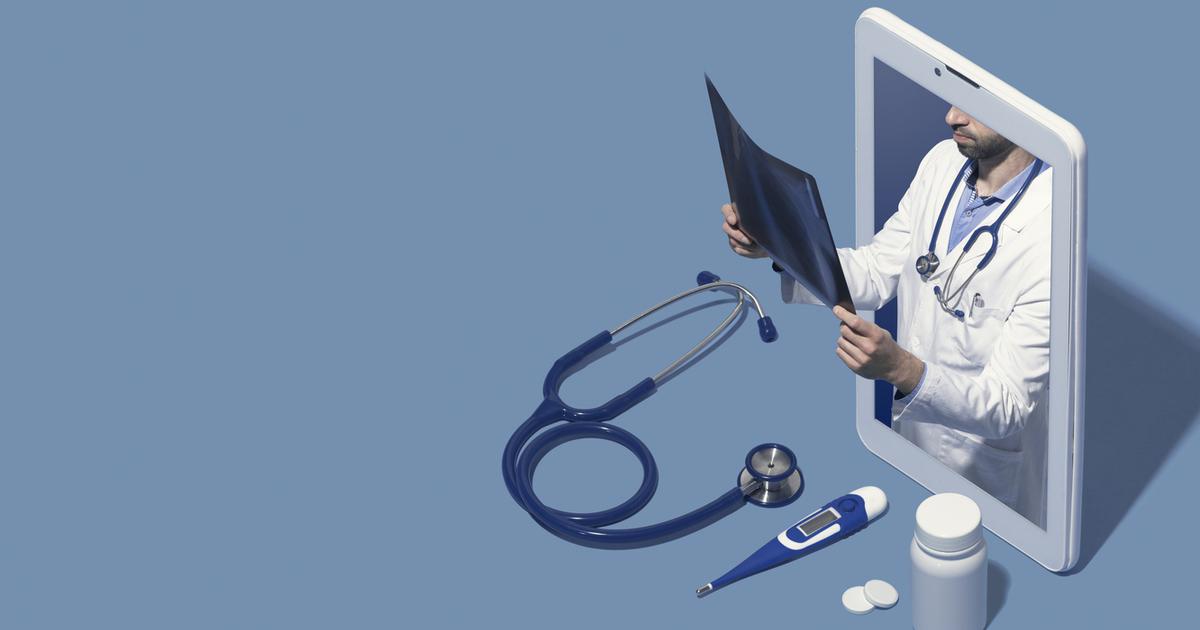The integration of artificial intelligence (AI) in telemedicine is poised to bring revolutionary changes. Future of AI Doctors enhances diagnostic accuracy, enables remote patient monitoring, provides virtual triage services, and much more. Imagine a personal health AI assistant that helps manage your health data, reminds you of appointments, and even offers preliminary diagnoses.
The future of AI doctors looks promising as AI is constantly developing and becoming more powerful and useful. AI in telemedicine improves access to healthcare for remote and underserved patients. Tools increase diagnostic accuracy through enhanced medical image analysis and data processing.
AI algorithms can analyze health data and tailor treatment plans to individual needs. In this blog post, we will discuss the benefits and prospects of AI doctors in telemedicine and remote healthcare.
The Future of AI Doctors in Healthcare
The use of AI in healthcare is not a new concept. In the 1970s, AI was first used to solve biomedical problems. Since then, AI applications have evolved and improved, reshaping the healthcare sector. AI doctors are essentially AI models trained on vast medical records and healthcare data.
Today, these AI systems offer a wide range of applications in healthcare and telemedicine, enabling providers to expand medical services to a wider population. Let us discuss use cases of AI in telemedicine and remote healthcare.
1. Virtual Triage
AI algorithms analyze medical history and symptoms to help prioritize cases that need urgent care or medication. The virtual triage ensures patients receive timely care when they are in critical situations. Hospitals can efficiently allocate resources to optimize patient outcomes. This optimized resource allocation reduces wait times for patients and increases satisfaction.
2. Remote Monitoring
Continuous patient monitoring is crucial in the management of chronic conditions. Thanks to advancements in technology, the concept of remote patient monitoring is now a reality. AI-powered wearable devices collect real-time health data such as blood pressure, blood glucose, heart rate, ECG signals, and various other vital signs.
This collected data can be analyzed with AI algorithms, aiding in the early detection of any deteriorating health states. This allows doctors to intervene early and provide timely treatment, improving patient outcomes.
3. Medical Imaging Analysis
AI doctors are trained on vast amounts of medical imaging data, making them valuable tools for analyzing X-rays, MRIs, CT scans, and ultrasounds. For example, AI algorithms can detect early signs of breast cancer in mammograms.
Furthermore, these tools can aid radiologists in detecting lung cancer in CT scans. AI systems can analyze large volumes of medical images quickly, leading to faster diagnosis and treatment decisions. With AI, radiology departments can serve more patients in less time as AI automates several repetitive tasks and accelerates image analysis.
4. Chatbots and Virtual Assistants
Healthcare AI chatbots and virtual assistants play a crucial role in enhancing patient engagement in telemedicine. Patient engagement is a vital factor in patient satisfaction. AI chatbots use natural language processing (NLP) to understand and respond to human queries.
Patients can seek health information and virtual support 24/7, anywhere, anytime. These chatbots can answer basic health queries and aid in appointment scheduling. Moreover, they save a lot of time for healthcare professionals, allowing them to focus on providing quality care.
Future AI Doctors in Telemedicine
The future of AI doctors in telemedicine is very promising. AI has the potential to make telemedicine and remote healthcare more accessible, effective, and efficient. The availability of 5G mobile communication technology will help patients receive advanced medical care without traveling long distances.
AI will make it easier for the elderly population living in rural areas to receive earlier and more accurate diagnoses. Furthermore, the combination of robotics and AI algorithms in telemedicine has the potential to transform remote clinical care and monitoring.
During the Ebola outbreaks and the COVID-19 pandemic, the world has seen an increased usage of robotics and telemedicine. In the future, robotics can be use to control the outbreak of infectious diseases by enabling disinfection, drug delivery, and measuring vital signs.
With continued advancements in AI and telemedicine, we can look forward to a future where healthcare is more accessible and responsive, leading to better patient outcomes and overall health.
Conclusion
In conclusion, the future of AI doctors in telemedicine and remote healthcare is bright. Today, AI and other cutting-edge technologies are making what we once could only imagine a reality. AI algorithms analyze health data and aid in identifying patients needing urgent care.
With AI and wearable technology, remote patient monitoring is playing a crucial role in the management of chronic diseases. In the future, 5G mobile technology and robotics are anticipate to play a huge role in transforming telemedicine and remote healthcare.
We must always look for better ways to provide quality care while maintaining patient safety and privacy as our top priority.






